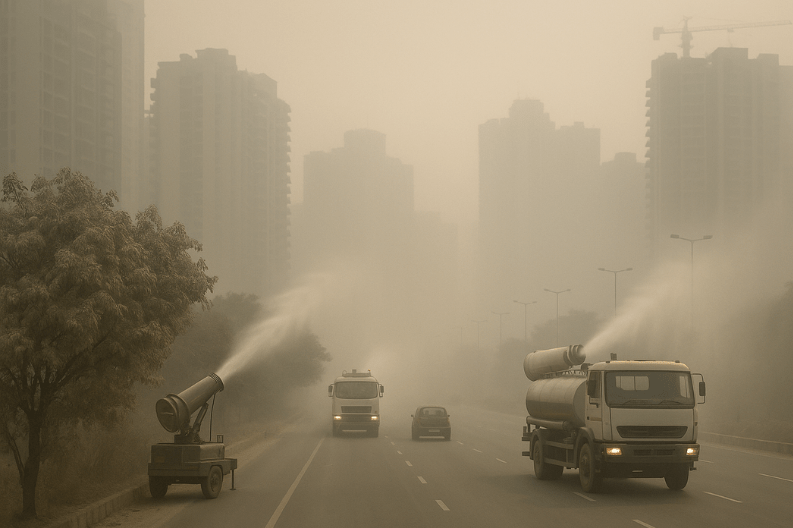Air quality worsens in Ghaziabad even as Noida saw a small improvement on Sunday. Noida’s AQI dropped from 397 to 385, but it still stayed in the “very poor” category. Meanwhile, Ghaziabad’s pollution level increased sharply. Its AQI jumped from 392 to 419, placing it in the “severe” range. Greater Noida also recorded an AQI of 419, matching Ghaziabad and remaining in the severe category.
Moreover, Noida’s sector-wise data showed a mix of very poor and severe readings: Sector 116 reported an AQI of 412, Sector 125 had 409, Sector 1 recorded 373, and Sector 62 showed 330. In Greater Noida, Knowledge Park V had the worst air with an AQI of 432, while Knowledge Park III measured 394.
Additionally, many areas in Ghaziabad struggled with extremely polluted air. Loni recorded a dangerous AQI of 449, one of the highest in the region. Sanjay Nagar followed with 409, while Indirapuram had 386. However, Vasundhara’s data was unavailable for the day.
If we compare this to last year on the same date, the numbers were also worrying. Noida had an AQI of 328, Ghaziabad was at 363, and Greater Noida stood at 287. Although the values were poor, this year shows more severe spikes.
Weather conditions played a major role in these pollution levels. According to IITM, winds blew from the northwest at around 15 kmph on Sunday afternoon but slowed to below 5 kmph later. On Monday, winds will start calmly, rise to 10 kmph by afternoon, and then fall again in the evening. Slow winds often trap pollutants near the ground, making the air dirtier.
Furthermore, the Noida Authority launched several actions to fight pollution. Fourteen monitoring teams checked 62 locations to ensure people followed the GRAP rules. These teams also spread awareness among people.
To reduce dust and pollution, authorities carried out several operations:
• 54 tankers sprinkled treated water on 231 km of roads
• 19 mechanical sweepers cleaned 340 km of streets
• 19 horticulture tankers watered central verges
• 88 stationary and 10 truck-mounted anti-smog guns were deployed
• 601 tons of construction and demolition waste were removed
Despite these steps, residents still reported gaps. Amit Gupta from Sector 77 said trees near Sectors 115–116 looked “covered in dust like snow” and complained that water sprinkling did not happen in his area. His concerns show that the efforts must be regular and widespread.
Additionally, poor air quality affects everyone: children, senior citizens, and people with breathing issues face higher risks. Doctors say prolonged exposure to toxic air can lead to asthma, lung infections, heart problems, and reduced immunity.
Communities can also contribute by reporting violations, avoiding unnecessary burning, reducing vehicle use, and supporting green initiatives. Authorities and citizens working together can help bring long-term improvement.
In conclusion, air quality worsens in Ghaziabad in Ghaziabad even as nearby cities try to control pollution. Stronger, consistent measures and active public participation are needed to ensure cleaner and healthier air for all.



